Seapost -> Great Britain Paquebot Marks
Great Britain Paquebot Marks
By Mike Dovey
Following the Omnibus set of single line Paquebot cancels that were issued to a number of Post Offices in 1894, together with the various Ship Letter cancels that carried on after that date, eventually certain Post Offices decided to issue their own version of the Paquebot postmark.
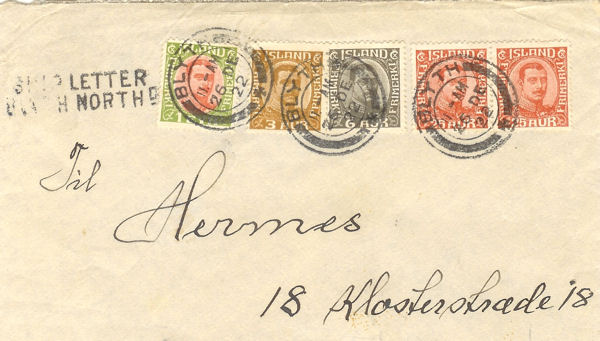
The Two Line Cancel: SHIP LETTER / BLYTH NORTH HD, (Hosking 9D, Robertson S1).
The first real variation to what was in use in 1894 was at Blyth which issued a 2 line cancellation in 1903 and, although it was rarely used, it lasted until 1920. Here and elsewhere, over the years that followed, there were five variations to come into circulation. However, there are a couple of extra individual styles like the triangular cancel at Boston and the four line boxed cancel at Wisbech that are not included in this list.
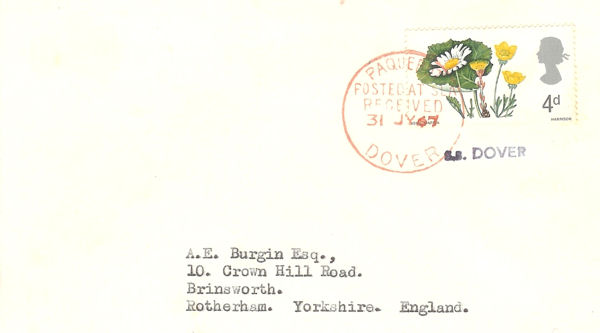
The Circular Cancel: Dover, (Hosking 50A).
One of the first circular cancels to be used as a Paquebot cancellation was at Dover. This was issued in 1911 and lasted for 70 years until 1981 when it was superseded by a new mark. This mark was very well used by all of the various ferry companies crossing the channel and any collector of British Rail, Sealink, or P&O Ferries will know the mark well.
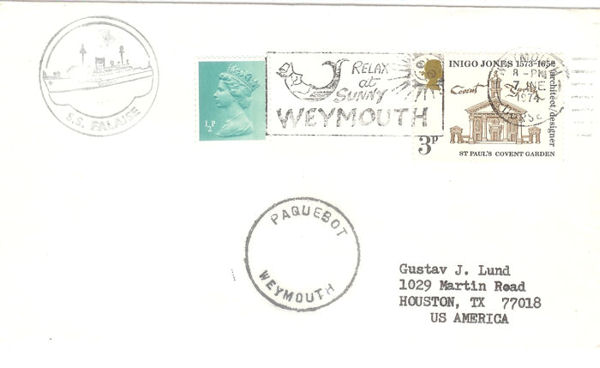
Yes it does exist! Weymouth (Hosking type 235DD) dated 1974, on cover posted from the Sealink ferry S.S. FALAISE. Not just as rare as Hen's teeth but rare, as in before teeth were invented!
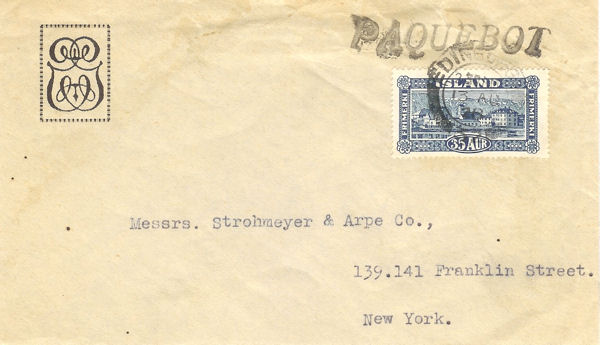
The Single Line Cancel: Edinburgh, (Hosking 276C).
One of the first of the new type of single line cancels was at Edinburgh. Their first new cancel since 1894 was issued in 1913, remaining in use until 1936. It was the first of many and any collector of this port will have spent many an hour trying to decipher which mark was which as a number of marks were issued and all tended to stretch or soften, making identification a little difficult.
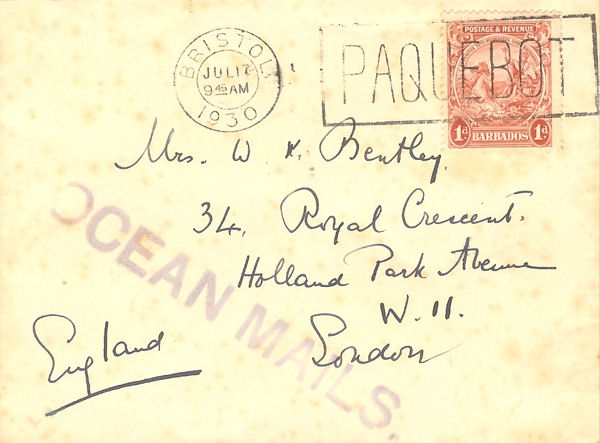
The Machine Cancel: Bristol, (Hosking 27B).
One of the first machine cancels to be introduced was in 1925 at Bristol. It lasted only until 1933. The use of these machine cancels just shows that there was such a volume of mail being sent using the Paquebot mail method that the volume was too much for the postal workers to cancel each letter by hand.
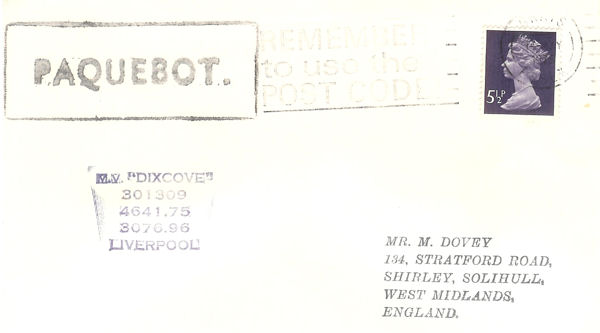
The Boxed Cancel: Grays, (Hosking 77A).
Strangely enough, boxed cancellations did not appear in Great Britain until the early 1950's when there was a flurry of new marks. One of the first was at Grays, a port which serviced all of the Orient and P&O vessels coming in from Australia. The cancel appeared in 1951 and lasted until 1979 when it was replaced by a new mark.
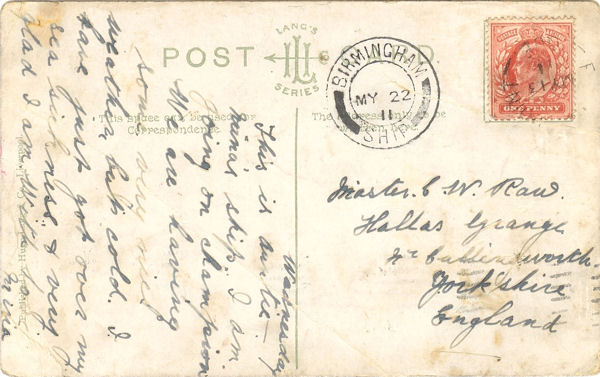
The "SHIP" Cancel: Birmingham, (Hosking 7DD).
As an extra to the five above cancels, no list could be complete without a mention of the mark issued at Birmingham in 1907 and used on rare occasions until 1922. Now, while Birmingham is in an area where there are more canals than Venice, it is still 100 miles from the sea and the question is always asked "Why ?". "Why is there a paquebot cancellation at an office so far away from where a liner would deposit its mail?" Well, the clue is in the content of the mail. All known covers or postcards seem to have come from White Star Line vessels and the conjecture is that the mail was sent direct from Liverpool straight down to Birmingham for sorting as it was so busy in the Liverpool office. Others will state that the mail was deposited by White Star at Bristol for the same reason - it could even be both. More likely the mails were landed at Plymouth and sent by rail via Bristol to Birmingham for sorting. A 100 years have passed and we still don't know the answer. This is what makes collecting all forms of Seapost such a fascinating collecting area. There are no known boundaries and every year a new piece of information is added to the cause, opening a new door. Even now there could be an unknown mark just waiting to be found. Click here to see a census of covers with the Birmingham Ship Letter mark.
But finally, it appears that Royal Mail is unilaterally withdrawing this service. Follow the saga by clicking on this link.
However, as this extract from the UPU Regulations published at Berne in 2017 demonstrates, the rules for Paquebot mail still apply.

